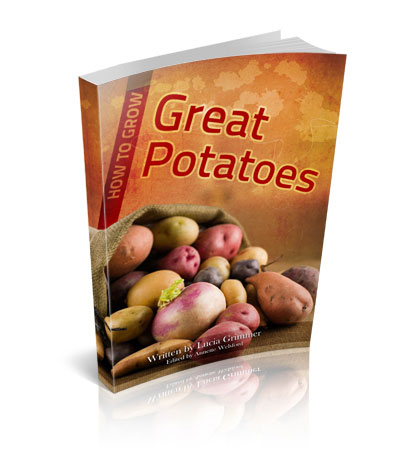Chinese Artichokes: a Tuber with a Difference
Although relatively difficult to source planting material, Chinese artichokes are an incredibly easy vegetable to grow.
Like potatoes and Jerusalem artichokes, this is a tuber, but it is not related to either of these plants. Nor is it related to the globe artichoke which is sometimes called an Italian artichoke, and is not a tuber at all.
Mature tubers from this plant are small and spiral shaped, no longer than 4-6 cm (just a fraction of an inch) long. They are a creamy white colour and when clean have a pretty, pearl-like sheen.
About Chinese Artichokes
The botanical name of this vegetable is Stachys affinis, whereas the Jerusalem artichoke is Helianthus tuberosus, and the globe or Italian artichoke is Cynara scolymus. It is also has a number of alternative names including Japanese artichoke, knotroot, crosne and artichoke betony.
These are tuberous rooted perennial plants that are related to the mint family (Lamiaceae) and grow well in similar fertile, well-drained soils that are partially shaded. They form low-growing bushes that tend to sprawl. The leaves look similar to lemon balm (another member of the Lamiaceae family), but unlike lemon balm, they don’t have any aroma.
Growing Chinese Artichokes
These vegetables may only be propagated from tubers which are planted to a depth of about 75-100 mm (3-4 inches) and 225-300 mm (9-12 inches) apart. Rows should be well spaced – 450 mm (6 inches) – which means they do take up quite a lot of room.
Once established, this is not a demanding crop. While a little liquid fertiliser and mulch will encourage growth, the only other procedures to follow are straight-forward weeding and earthing up as for potatoes. They should also be watered regularly because if the plants dry out they become dormant. Hot, dry ground also produces small, bitter tubers.
Chinese artichokes are harvested once their leaves have died off in autumn. They should not be left in the ground otherwise they will shrivel. They also should not be left in the ground in the hope that they will sprout and regrow the following year. The tubers should be lifted before the soil is “cleaned” for the next crop to be planted.
Preparing and Eating Chinese Artichokes
The spiral shape of these vegetables makes them impossible to peel or scrape. However the skin is thin and so they don’t need to be peeled. A quick scrub under cold running water is all that is required.
The flavour of these unusual artichokes is delicate and nutty. They are sometimes eaten raw, but more often stir fried. They may be cooked in the same way as Jerusalem artichokes and are also popular as a chopped garnish.
In the East (in both China and Japan) this type of tuber is frequently pickled.
Tags: Chinese artichoke, globe artichoke, Jerusalem artichoke, Potatoes, tubers













